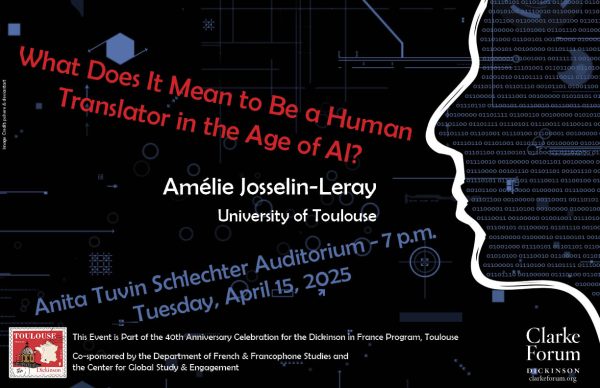“I Am A Person and I Am Proud”
“Yell as loud as you can, be heard!” we were told. “Empower yourself.”
Lined up single file, we formed a chain of fellow Dickinsonians from diverse histories, backgrounds, and perspectives, of different class years and skin color, to stand as one community. A community that not only acknowledges difference, but accepts and encourages it as strength and an asset.
As we proceeded into the HUB, the line of students in all black stretched across Louther Street, continuing for longer than ten minutes to completely file out of Rector. The chain spiraled around the stairs in the middle of the HUB as the cushies purred with common hour activity.
The rally began with a riff on “àşę” (pronounced “ashay”) a term expressing positive acceptance and resolution. There was a hushed sense of expectation over the group before, from within various points of the concentric circles, voices repeated statements heard on this campus that reinforce and perpetuate stereotypes towards minority groups.
“You don’t act gay.”
“I prefer light-skinned people.”
“You were asking for it by wearing something like that.”
These statements stank of power and control, the external affixment of labels onto an independent and autonomous body. But the chorus overwhelmingly erupted again, shouting “do not hesitate to challenge [those] who not be beholden to the labels and categories of others,” a cacophony of voices shouted their own identities with the enthusiasm of newly liberated peoples:
“I am black and I am proud!”
“I am Muslim and I am proud!”
“I am a woman and I am proud!”
The emotion in the space was palpable, electric. The exuberant shouts of one hundred students proclaiming their identity and pride was empowering for everyone present, not just the participants of the rally. As the shouts began to quiet, a lone voice clearly pronounced “I am a person and I am proud.” The words pierced the air like an arrow and hung there for maximum impact.
After a call to action and “have a great day,” the participants in black dispersed and mingled with the observers standing around the cushies, carrying the light of the moment into their day and across campus.
The Writers of the Student Liberation Movement include, but are not limited to, Brady Hummel ’17 and Teryon Lowery ’19.



